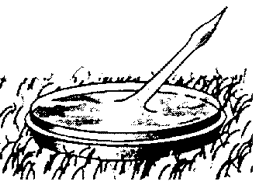 |
Science Frontiers ONLINE No. 79: Jan-Feb 1992 |
|
|
Spooky Spike
 |
I have in my garden a round red plastic container which holds water for the birds. In last winter's first hard frost, I found an odd ice formation in the bowl. Although the weather the previous day had been clement and the water was fluid, we had that night a sharp frost down to about -4�C. The following morning I noticed what appeared to be something sticking up out of the frozen water in the dish. On closer examination, it proved to be a solid 'spike' of ice, ending in an arrowhead. The ice was solid and came out of the side of the frozen water at an angle of about 45�. It was about 9 inches long and solid throughout." (Turner, Judy; "Spooky Spike," New Scientist, p. 54, November 2, 1991.)
Two weeks later, the same journal published two radically different explanations of the ice spike. G. Lewis called the spike an "ice fountain" and stated that it is due to the well-known expansion of water as it freezes. R. Blumen-feld, on the other hand, attributed the growth of the spike to the fact that water molecules on the surface and in surrounding air are electrical dipoles. In his view, a small defect in the ice's surface attracts polarized water molecules in the air, creating an outwardly growing structure. (Lewis, Geoff, and Blumenfeld, Raphael; "Sprouting Spikes," New Scientist, p. 58, November 16, 1991.)
Comment. Seldom does one find such engaging oddities discussed in American scientific publications. American scien tists are too stuffy it seems.